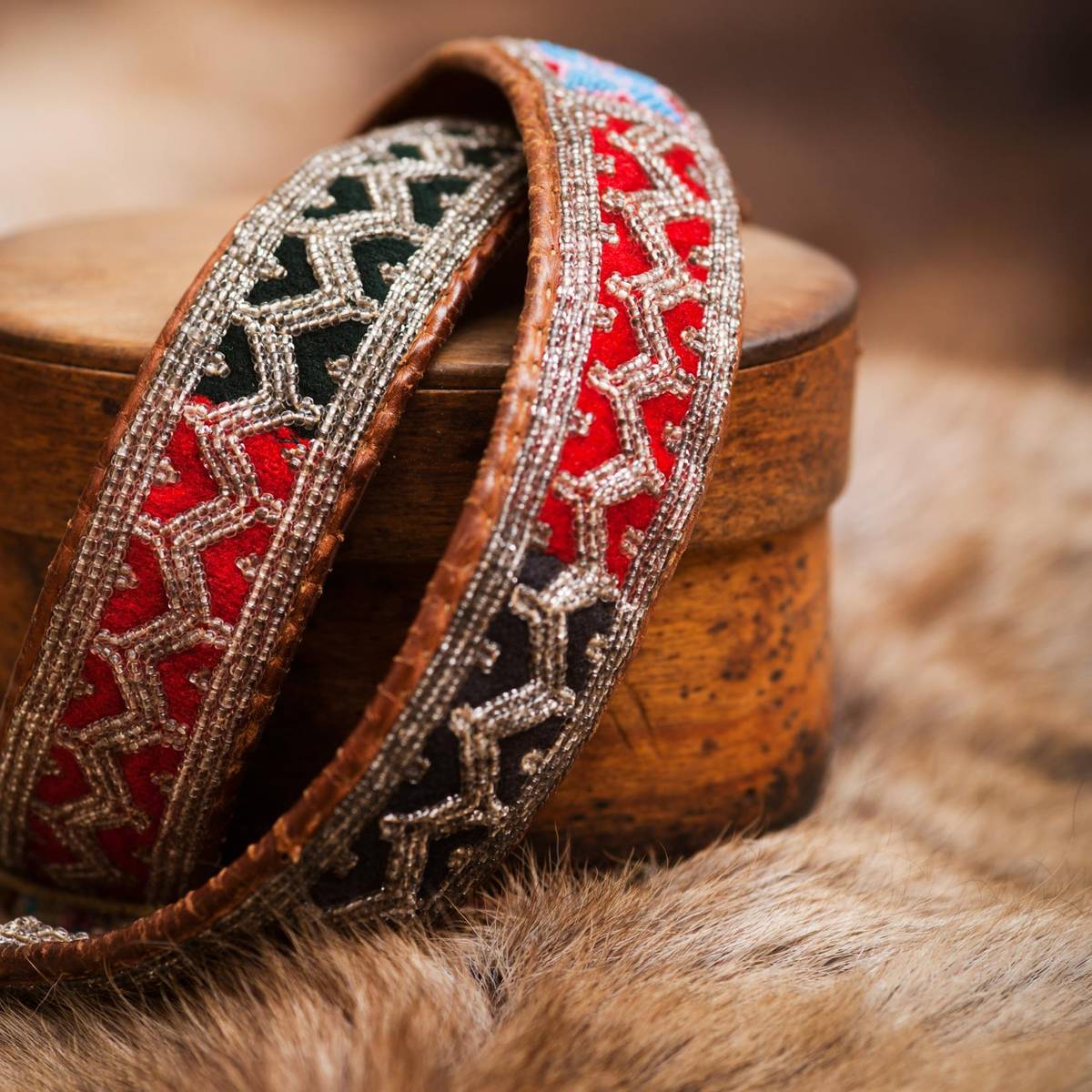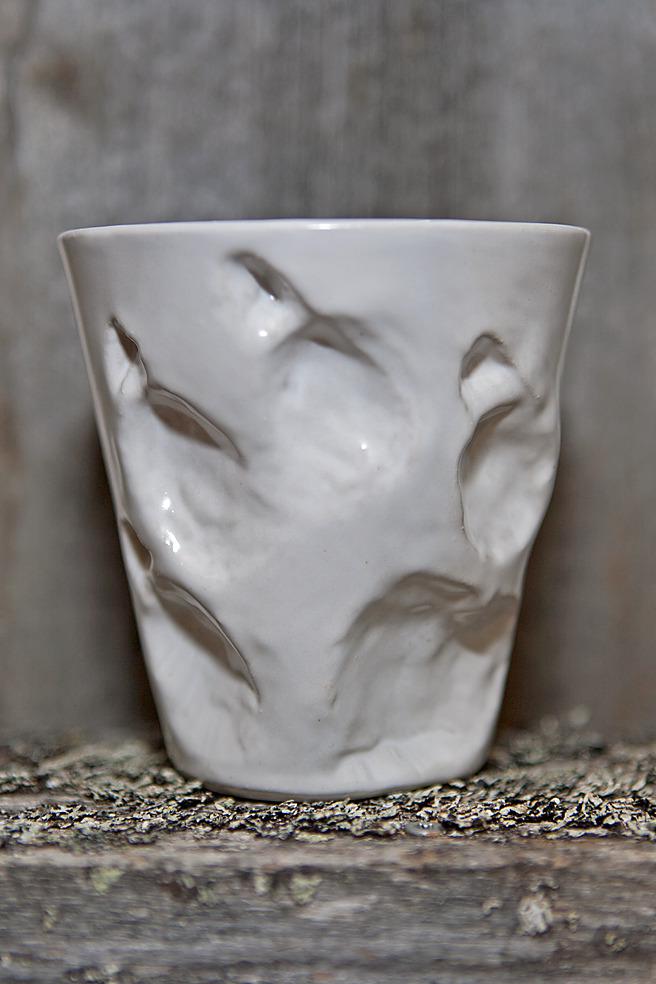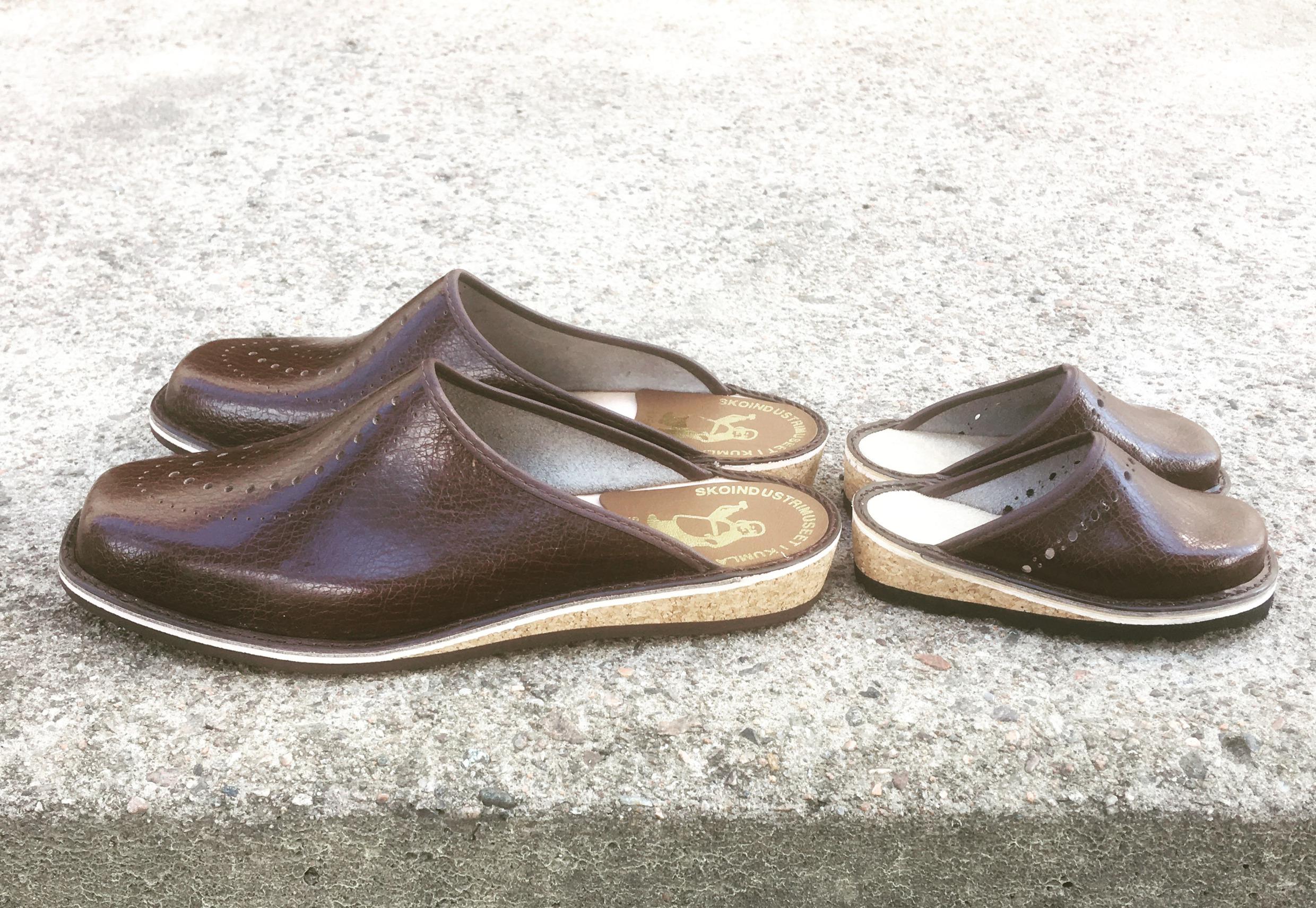
Swedish craft items to treasure
Sweden serves up all manner of handcrafted pieces – traditional and contemporary – often designed with sustainability in mind.

Sweden serves up all manner of handcrafted pieces – traditional and contemporary – often designed with sustainability in mind.
Sweden has a proud craft heritage that stretches back centuries. Encompassing everything from hand-painted woodcraft and Sami embroidery to sheepskin accessories and contemporary jewellery, there’s something to suit every taste when looking for Swedish souvenirs.
Here’s an introduction to a diverse range of products found across Sweden, from Vilhelmina in the north to Gotland in the south.
A treasure-trove of authentic ‘Duodji’ – the collective name for traditional Sami handicraft – Risfjells Sameslöjd is a store filled with beautiful textile items, woodcraft, jewellery and handy tools. Run by Doris and Sven-Åke Risfjell since the 1980s, most pieces are handcrafted on site by the couple. In keeping with the custom of Sweden’s indigenous population, the Samis, materials found in nature are used almost exclusively – think birch wood, bark, reindeer leather and horn. Bracelets and bags of reindeer leather, featuring pewter embroidery, are classic Sami souvenirs. You’ll also find decorative knives with intricately carved horn handles as well as a range of practical items. Risfjells’ Duodji items can be bought in-store and via the web shop.
Handmade bracelets from Swedish Lapland. The bracelets were traditionally made in Sámi culture, and are made of reindeer skin and tin thread with silver.
Photo: Pernilla Ahlsén/imagebank.sweden.se

Photo: Pernilla Ahlsén/imagebank.sweden.se

Photo: Jessica Lindgren/imagebank.sweden.se

Photo: Sanne Brännström/Swedish Lapland
Made from 100% Swedish Jämtland wool, A New Sweden’s un-dyed neck warmer gets its grey melange effect from a mix of white and black wool (black wool is usually destined for the bin). Salvaging waste is part of this slow fashion brand’s uncompromising approach. Founded in 2017 by Norrbotten-born Lisa Bergstrand – who cut her teeth at fashion houses including Saint Laurent and Celine – products are handcrafted in Sweden from Swedish materials (mostly wool) and released one at a time. Devoid of chemicals and plastic, the neck warmer, just like everything else in the collection, is fully compostable. It’s available to buy in A New Sweden’s webshop and select stores, such as Grandpa in Stockholm, Gothenburg and Malmö, and Göteborg Manufaktur in Gothenburg.
Based in the mountain-range village of Västeråsen, outside Östersund, you’ll find Fjällform. Their signature piece is a hand-thrown ceramic mug featuring tracks from wild animals, most of which are native to the province of Jämtland. If you opt to buy the winter white mug adorned with an arctic fox paw print, a small sum will be donated to support the survival of this beautiful animal. Fjällform’s products can be purchased via the company’s website and at various Swedish craft shops, including Gaupa Hantverk in central Östersund.
The ‘Dalahäst’ (Dala horse) is a Swedish icon. Hand-carved in wood and painted in a colourful folk art “kurbits” pattern on a primary-hued base – often bright red – it’s an eye-catching classic with a heritage stretching back to the 18th century. The Nils Olsson Hemslöjd workshop in the village of Nusnäs, Mora, is regarded as one of the original Dala horse purveyors – it’s been in business since the 1920s. The company’s designs – horses and more – are sold in the shop next to the workshop, where you’re invited to witness the making of these unique collectables. You’ll also find a sizeable stable of Nils Olsson Hemslöjd horses in online shops, such as dalarnadesign.se.
Wool neck warmer and sweatshirt by A New Sweden.
Photo: Niklas Bergstrand

Photo: Niklas Bergstrand

Photo: Leif Silversund

Photo: Leif Silversund

Photo: Amanda Westerbom/imagebank.sweden.se
Artist and silversmith Karin Ferner has created delightfully whimsical jewellery for decades. Based in the city of Falun, in a historic area of red wooden houses, she creates her wares from a workshop within her home– and often exhibits her work at major museums. Eco-minded and eclectic in approach, Ferner salvages vintage textiles and combines them with recycled silver to create unique pieces with substance and style – and a pinch of light-hearted fun. You’ll find Karin Ferner’s jewellery at Nordiska Museet’s museum shop.
Clever in its simplicity, Stockholm-based jewellery brand Endangered was established in 2019, with the aim of helping to protect the world’s most endangered species. They are featured figuratively as little pieces of wearable art and 20% of the sale proceeds is donated to selected wildlife charities. The result is a menagerie of near-extinct animals decorating rings, pendants, bracelets and earrings. Take your pick from mountain gorillas, pygmy elephants, staghorn coral, hawksbill turtles, Bornean orangutans and starfish. Sustainable in its approach, recycled sterling silver and 18 carat gold is used where possible. Pieces are designed in Stockholm by founder Therese Maurin – a jewellery designer with a marketing background – and handcrafted by artisans in the small village of Celuk, Bali. The whole collection is available in Endangered Jewellery’s web shop.
Rose jewellery by artist and silversmith Karin Ferner.
Photo: Ingela Sannesjö

Photo: Ingela Sannesjö

Photo: Ingela Sannesjö

Photo: Daniela Spiroska

Photo: Louise Bahrton

Photo: Louise Bahrton
Skoindustrimuseet (the shoe industry museum) is a footwear museum and factory rolled into one. Celebrating Kumla’s past as a shoe manufacturing hub, the museum features footwear from the Middle Ages to the present day, as well as a range of historic shoemaking tools and equipment. Its stylish leather slippers have been handcrafted on the premises since 1986. A visit to the museum will give you the opportunity to take in the factory action and stock up on the finished product in the resident shop. Aside from surprisingly affordable slippers – offered in a spectrum of hues – you’ll also find desert boots and lace-up shoes, most of which are available in sizes 35-47. Orders can also be placed online via email or telephone.
Lamm & Bi (lamb and bee) is a decidedly Gotlandic affair. This family-run farm, located in Romakloster in central Gotland, utilises almost everything from its large herd of Gotlandic sheep (and bees – there’s plenty of honey to buy and bee wax candles, too). Owner Annette Bonnevier – a keen seamstress since childhood – handcrafts accessories such as cushions, hats, scarves and teddies. Appearing in its natural state, the fleece is grey and glossy. These lovingly made products can be purchased in the farm shop or via the website or telephone. You’ll also find Lamm & Bi’s pieces at retailers, such as Kvinnfolki – a Visby-based store selling the wares of local female artisans.
Leather slippers from Skoindustrimuseet in Kumla.
Photo: Skoindustrimuseet

Photo: Skoindustrimuseet

Photo: Lamm&Bi